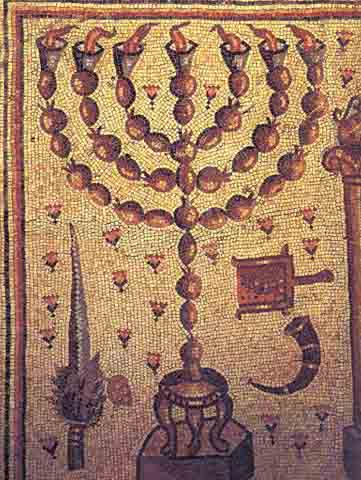Image Details

© 1982 Erich Lessing/Culture and Fine Arts Archives
Other objects important in Jewish ritual appear in this mosaic panel from the nave, or main hall, of the Hammath Tiberias synagogue. To the right of the menorah are a shofar (ram’s horn) and an incense shovel. Bands around the shofar may depict gold rings. The model for the brown incense shovel was likely made of copper or bronze. To the left of the menorah, an etrog (a citrus fruit) dangles from a lulav, or palm frond. In accordance with Jewish law, the etrog, three branches of myrtle, and two willow branches are all bound to the base of the lulav; they are carried together in the synagogue during the festival of Succot. The Hammath Tiberias mosaic is the only clear depiction of this precise binding, suggesting that the artist had intimate knowledge of his subject. However, these clues to the identity of the mosaic artist conflict with the depictions in the zodiac of uncircumcised men, and make us wonder—Are both the Ark mosaic and the zodiac the work of one artist? Or did a Jewish artist create the Ark panel and a non-Jew the zodiac?
